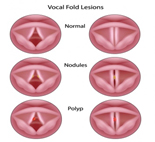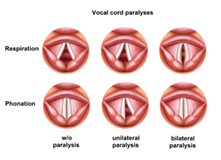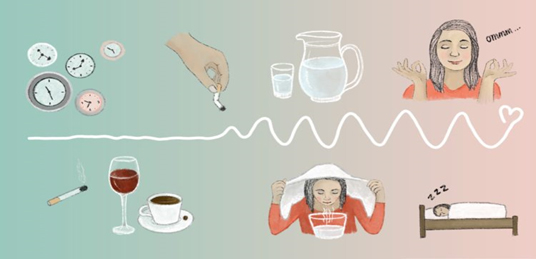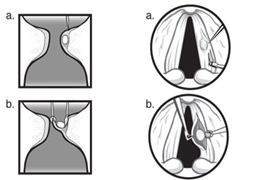- Home
- Voice
Voice
VOICE DISORDERS
Voice disorders can have a neurological, organic, functional or psychological origin and affect the voice and vocal tract. They range from complete absence of voice (aphonia) to varying degrees of vocal impairment.
People with voice disorders have very typical complaints, which include.
Hoarseness
Scratchy voice, weak voice, breathy voice.
Difficulty with loudness, increased effort to talk.
Pain or discomfort while speaking or singing.
Change in singing voice.
Voice fatigue (worsening voice quality or discomfort with voice use) .
Changes in voice after trauma or surgery to the neck, throat, or larynx.
Change in pitch of the voice, Female voice in males (puberphonia) or male voice, in females (andropohonia).
Hyper and hyponasality (Nasal voice).
Causes of voice disorders
Organic causes include the following:
Structural
Vocal fold abnormalities (e.g., vocal nodules, oedema, glottal stenosis and polyp).
Inflammation of the larynx.
Trauma to the larynx (e.g., from intubation, chemical exposure, or external trauma).

Neurologic
Recurrent laryngeal nerve paralysis
Adductor/abductor spasmodic dysphonia
Parkinson's disease
Multiple sclerosis

Functional causes include the following:
Phonotrauma (e.g., yelling, screaming, excessive throat-clearing)
Muscle tension dysphonia
Ventricular phonation
Vocal fatigue (e.g., due to effort or overuse)
Psychogenic causes include the following:
Chronic stress disorders
Anxiety
Depression
Conversion reaction (e.g., conversion aphonia and dysphonia)
How the Voice problems can be prevented?
Avoiding Abuse or misuse of voice like yelling.
Drinking sufficient water.
Avoiding throat clearing.
Avoiding spicy foods.
Avoiding drugs like aspirin or anti allergic drugs.
Avoiding of smoking an alcohol.

How is a voice disorder diagnosed?
A thorough evaluation of the patient is required to diagnose the patient's problem and to decide its management. A typical evaluation normally includes:
A thorough history taking, to determine the exact nature and possible causes of the complaint
Assessing the function of the vocal folds with Flexible Laryngoscope.
Examining the vocal cords using a specialized flickering light source, called digital Laryngostroboscopy. This allows an assessment of the movement and vibration of the vocal cords. This best & latest instrument for early detection of vocal cord cancer.
Analysis of the sound signal (acoustic or computerized voice analysis).
Other special tests may also be required for a complete evaluation of the voice disorder. Many times a voice problem has to be diagnosed and treated by a team of specialist like E.N.T Surgeon, Speech therapist/Speech Language Pathologist (SLP’s), gastroenterologist, endocrinologist, neurophysician and psychologist etc.
Three Main Approaches in the Treatment of Voice Disorders
1. Medical Treatments
Advances in general medicine have also advanced treatment of voice disorders. For example:
New anti-reflux medicines provide effective medical treatment for reflux laryngitis. (For more information, see Reflux Laryngitis.)
Effective monitoring and treatment of low thyroid hormone levels help patients with voice disorders caused byhypothyroidism.
Advances in the use of botulinum toxin, type A as an injected medicine for muscle disorders provides a key treatment option for voice disorders caused by muscle spasm (spasmodic dysphonia). (For more information, see Spasmodic Dysphonia.)
2. Voice Therapy
Voice therapy is an important part of treatment for many voice disorders.
Voice therapy is designed to treat the most common underlying cause of voice disorders: voice misuse and abuse. Voice therapy is often combined with other treatment approaches.
Laryngologists often recommend voice therapy as first-line treatment for voice disorders in which voice misuse or abuse has contributed to long-term irritating injury to the vocal folds, resulting in lesions (such as vocal fold nodules, cysts or polyps). When a patient's case is not complicated, voice therapy can help patients eliminate harmful voice habits through proper voice technique. Over time, voice therapy can make the lesions much smaller or go away completely.
Voice therapy is also indicated when voice misuse or abuse results in vocal fold scarring. Although unable to remove scarring, voice therapy can prevent further worsening of vocal fold scar and/or can help patients gain some voice function with proper voice technique.
For patients who have had surgery to remove a vocal fold growth (cancerous or non-cancerous), voice therapy plays a key role in guiding recovery and rehabilitation of voice function. (For more information, see Voice Therapy.)
3. Surgical Treatments
Surgical treatments of voice disorders have improved dramatically in recent years.
This improvement is due to dramatic changes in surgical techniques based on:
Better understanding of voice function (voice physiology)
Better understanding of the impact of voice disorders on voice function (voice pathophysiology)
Better surgical instrumentation
Better medical and voice therapies

Role of SLP in voice disorder
SLPs are trained to evaluate voice use and vocal function to determine the cause of reported symptoms and to determine optimal treatment methods for improving voice production.